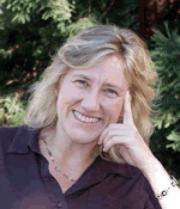Scientists identify key gene that protects against leukemia

Researchers have identified a gene that controls the rapid production and differentiation of the stem cells that produce all blood cell types -- a discovery that could eventually open the door to more streamlined treatments for leukemia and other blood cancers, in which blood cells proliferate out of control.
Additionally, in investigating the mechanisms of this gene, the scientists uncovered evidence that could lead to a protocol for bone marrow transplants that could boost the chance of a cure in some patients.
The research, led by Emmanuelle Passegué, PhD, of the University of California, San Francisco, demonstrates that the JunB gene is at the center of a complex network of molecular and environmental signals that regulate the proliferation and differentiation of hematopoietic stem cells, the multipotent, self-renewing cells that give rise to all blood cell types.
In the study published April 7, 2009, in the journal Cancer Cell, Passegué's team studied the behavior of JunB-deficient HSCs in both the culture dish and when transplanted into mice. In every case in which engraftment of the HSCs occurred in the mice, the scientists noted a progressive expansion of the myeloid lineage, which constitutes a type of mature white blood cell that fights infection. This expansion led by 6 to 12 months post-transplantation to the development of a myeloproliferative disease, which can evolve to leukemia. The finding indicated that the proliferating JunB-deficient HSCs causes leukemia.
Like traffic lights, which limit speed, direct the flow of vehicles and prevent accidents, JunB curtails both the rate at which HSCs are proliferating and the rate of differentiation toward the myeloid lineage that ultimately results in leukemia. The striking analogy inspired the image for the cover of Cancer Cell's April 7 issue.
Without JunB, HSCs lose their ability to respond to signals from the protein receptors Notch and TGF-beta, which reside on the cells' surface and play critical roles in determining cell fate.
"By uncovering this mechanism, we might one day be able to determine the difference between normal HSCs and leukemic stem cells in gene regulatory networks. This could allow us to develop more targeted therapies. These kinds of therapeutic applications are still down the road, but they can happen very quickly in the blood/leukemia field," says Passegué.
Passegué's study represents a turnabout from other research, which has demonstrated that mutated HSC that cause leukemia burn out at a faster rate than normal HSCs. In contrast, this study shows that JunB does not effect the cells' potential for unlimited self-renewal.
The researchers demonstrated this by treating both JunB-deficient mice and control mice with the powerful chemotherapy drug 5-FU, which was given to deplete regenerating HSCs. As expected, JunB-deficient mice consistently displayed higher levels of myeloid lineage than the control group, indicating constant regeneration of a myeloproliferative disease from JunB-deficient HSCs that persisted after treatment. When researchers compared survival rates of the animals during several cycles of treatment, they found little difference between the two groups, indicating that JunB-deficient HSCs do not exhaust faster than the control HSCs.
In tracking the differences between the JunB-deficient mice and the control group, it became apparent to the researchers that purity of HSCs was a key factor in determining the success of engraftment. Initially, the scientists were struck by the disparity in engraftment between the JunB-deficient HSCs and the control HSCs. But with the use of SLAM cells, a highly purified HSC population, they found that the two groups displayed in fact identical engraftment.
This finding may have important ramifications for patients undergoing bone marrow transplants, for leukemia, lymphoma, multiple myeloma and certain cancers.
"Currently, patients undergoing bone marrow transplants may not be getting enough of the quiescent transplanted HSCs that are optimal for successful engraftment," says Passegué. Using a highly purified HSC population could be more beneficial."
Source: University of California - San Francisco















